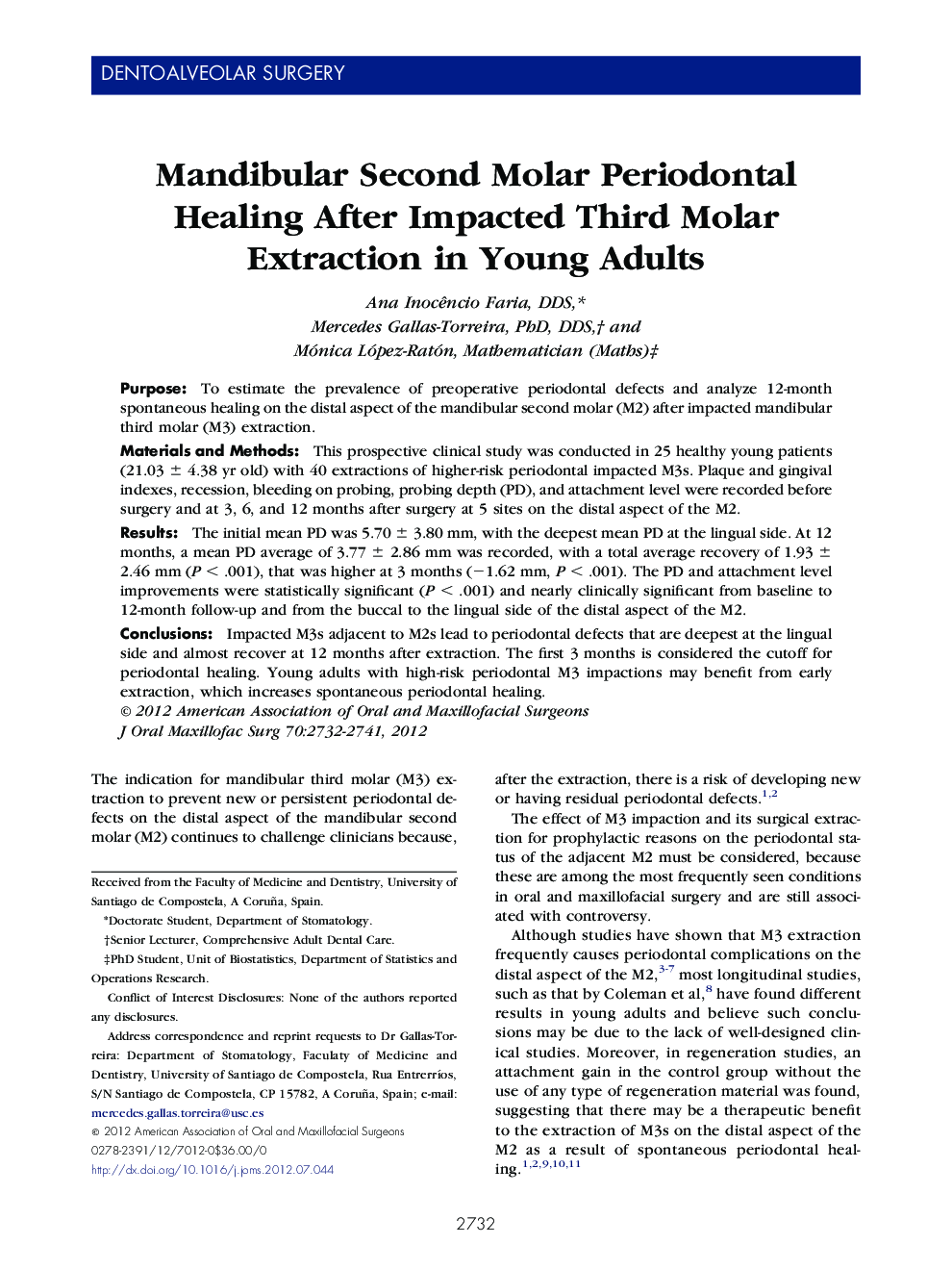| Article ID | Journal | Published Year | Pages | File Type |
|---|---|---|---|---|
| 3158052 | Journal of Oral and Maxillofacial Surgery | 2012 | 10 Pages |
PurposeTo estimate the prevalence of preoperative periodontal defects and analyze 12-month spontaneous healing on the distal aspect of the mandibular second molar (M2) after impacted mandibular third molar (M3) extraction.Materials and MethodsThis prospective clinical study was conducted in 25 healthy young patients (21.03 ± 4.38 yr old) with 40 extractions of higher-risk periodontal impacted M3s. Plaque and gingival indexes, recession, bleeding on probing, probing depth (PD), and attachment level were recorded before surgery and at 3, 6, and 12 months after surgery at 5 sites on the distal aspect of the M2.ResultsThe initial mean PD was 5.70 ± 3.80 mm, with the deepest mean PD at the lingual side. At 12 months, a mean PD average of 3.77 ± 2.86 mm was recorded, with a total average recovery of 1.93 ± 2.46 mm (P < .001), that was higher at 3 months (−1.62 mm, P < .001). The PD and attachment level improvements were statistically significant (P < .001) and nearly clinically significant from baseline to 12-month follow-up and from the buccal to the lingual side of the distal aspect of the M2.ConclusionsImpacted M3s adjacent to M2s lead to periodontal defects that are deepest at the lingual side and almost recover at 12 months after extraction. The first 3 months is considered the cutoff for periodontal healing. Young adults with high-risk periodontal M3 impactions may benefit from early extraction, which increases spontaneous periodontal healing.
